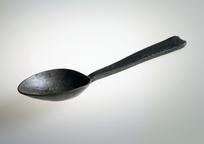

Silver gilt pendant, ‘memento mori’, Europe, 1701-1900
- Made:
- Unknown date in Europe






Silver gilt pendant, a memento mori in the form of a coffin containing a skeleton with frog sitting on abdomen
The tiny coffin is a form of ‘memento mori’, an object made to remind the wearer of the short length of life. It is decorated with crosses on all sides and opens to reveal a skeleton with a frog sitting on the abdomen. Frogs dramatically transform in their lifetime so they are associated with rebirth and resurrection. Memento mori were popular in 1700s and 1800s Europe. They were often carried in memory of a lost loved one.
Details
- Category:
- Wellcome (general)
- Collection:
- Sir Henry Wellcome's Museum Collection
- Object Number:
- A38717
- Measurements:
-
overall (open): 12 mm x 60 mm x 33 mm,
overall (closed): 12 mm x 60 mm x 18 mm, .018 kg
- type:
- memento mori
- credit:
- Fosters




